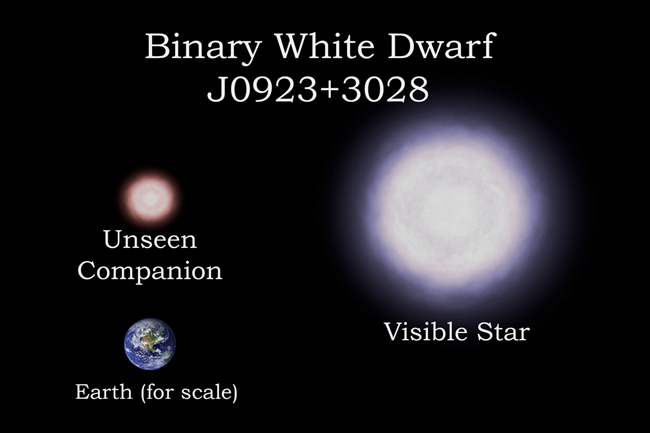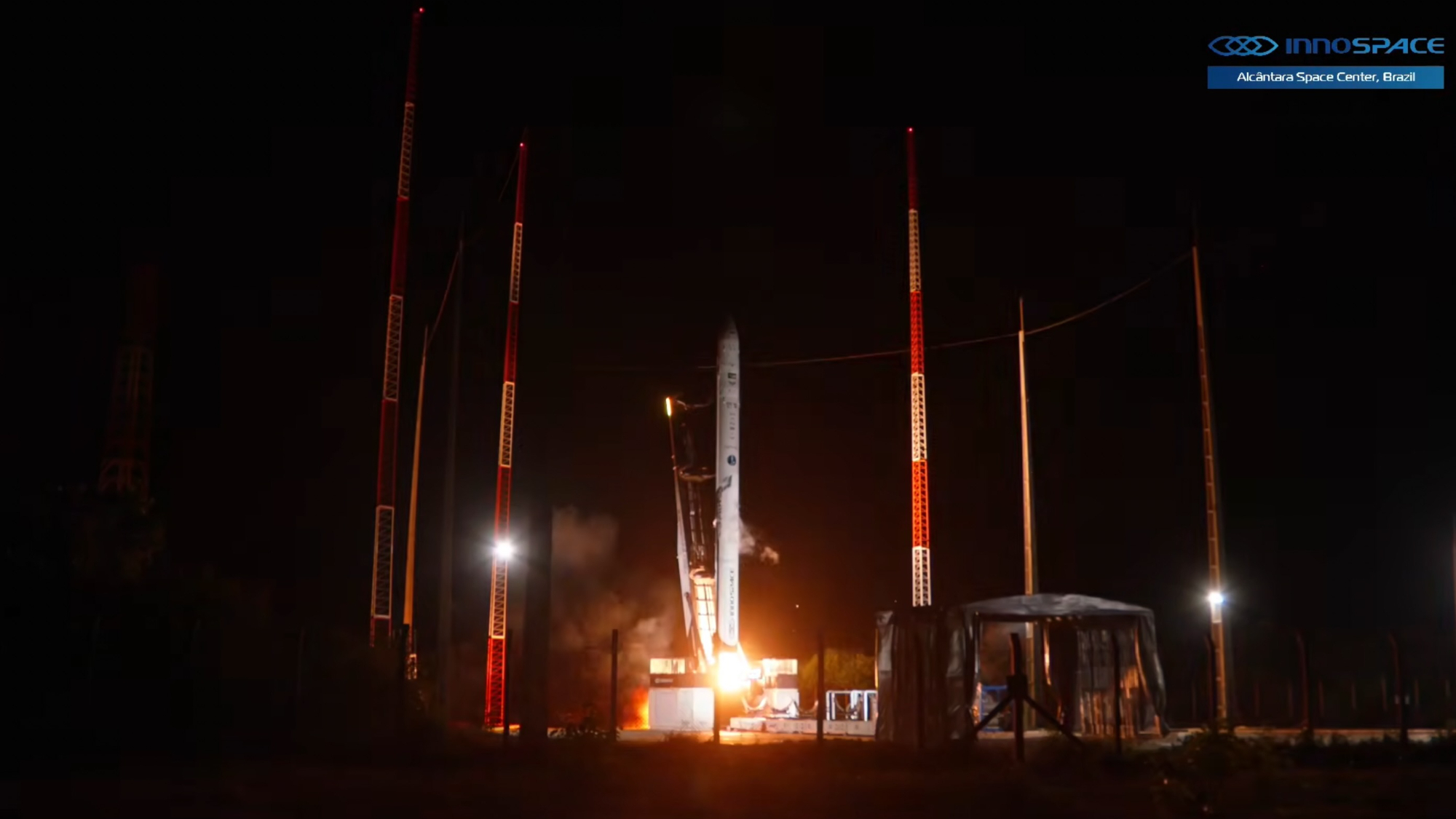Explosive Find: Double Stars Likely to Merge With a Bang

The binary star system J0923+28 consists of two white dwarfs: a visible star weighing 23 percent as much as our Sun and about four times the diameter of Earth, and an unseen companion weighing 44 percent of the Sun and about one Earth-diameter in size. The stars are currently separated by about 220,000 miles and orbit each other once per hour. The stars will spiral in toward each other and merge in about 100 million years.
Astronomers have discovered a dozen previously unknown double-star systems, each on a course to end in spectacular explosions detonated by the crash between their two small, dense stars.
All of the newfound binary star systems consist of two white dwarf stars. It is these stars that are on a collision course in each system.
A white dwarf is the hot, dead core left over when a sun-like star puffs off its outer layers as it dies. They are incredibly dense, packing as much as a sun's worth of material into a sphere the size of Earth. A teaspoon of it would weigh more than a ton.
"These are weird systems — objects the size of the Earth orbiting each other at a distance less than the radius of the sun," said astronomer Warren Brown of the Harvard-Smithsonian Center for Astrophysics in Cambridge, Mass., lead author of a pair of papers reporting the find.
The astronomers discovered 12 binary white dwarf systems — about half of which will likely see their stars merge into one, then explode.
The tightest binary system, one in which its two stars circle each other once every hour, will merge in about 100 million years, the scientists estimated.
Breaking space news, the latest updates on rocket launches, skywatching events and more!
White dwarf lightweights
The white dwarfs found in this survey are relatively lightweight, holding only about 20 percent as much mass as the sun. They are made almost entirely of helium, unlike normal white dwarfs made of carbon and oxygen.
"These white dwarfs have gone through a dramatic weight-loss program," said Carlos Allende Prieto, an astronomer at the Instituto de Astrofisica de Canarias in Spain and a co-author of the study. "These stars are in such close orbits that tidal forces, like those swaying the oceans on Earth, led to huge mass losses."
Because they whirl around so close to each other, the white dwarfs' gravity can stir space-time around them, creating expanding ripples known as gravitational waves. Those waves, which scientists have yet to directly detect, are thought to carry away orbital energy and cause the stars to spiral closer together.
Collision-course stars
The six newfound star systems with merging white dwarfs boost the number known of double-star setups in the act of merging into one."We have tripled the number of known, merging white-dwarf systems," said co-author Mukremin Kilic, also of the Harvard-Smithsonian Center for Astrophysics. "Now we can begin to understand how these systems form and what they may become in the near future."
When two white dwarfs merge, their combined mass can exceed a tipping point, causing them to detonate and explode as a Type Ia supernova.
Brown and his colleagues suggest that the merging binaries they have discovered might be one source of less flashy supernovas — a rare type of supernova explosion 100 times fainter than a normal Type Ia supernova, which ejects only 20 percent as much matter.
"The rate at which our white dwarfs are merging is the same as the rate of under-luminous supernovae — about one every 2,000 years," Brown said. "While we can’t know for sure whether our merging white dwarfs will explode as under-luminous supernovae, the fact that the rates are the same is highly suggestive."
The paper announcing their find will be published in an upcoming issue of the Monthly Notices of the Royal Astronomical Society.

Space.com is the premier source of space exploration, innovation and astronomy news, chronicling (and celebrating) humanity's ongoing expansion across the final frontier. Originally founded in 1999, Space.com is, and always has been, the passion of writers and editors who are space fans and also trained journalists. Our current news team consists of Editor-in-Chief Tariq Malik; Editor Hanneke Weitering, Senior Space Writer Mike Wall; Senior Writer Meghan Bartels; Senior Writer Chelsea Gohd, Senior Writer Tereza Pultarova and Staff Writer Alexander Cox, focusing on e-commerce. Senior Producer Steve Spaleta oversees our space videos, with Diana Whitcroft as our Social Media Editor.
